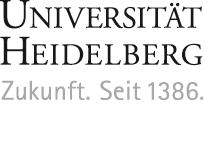Protein Biosynthesis: New Factor for Translation Termination
1 February 2007
Co-author Matthias Seedorf, project group leader at the Centre for Molecular Biology (ZMBH) of the University of Heidelberg: "I too was very surprised"
In the framework of a collaboration spearheaded by the laboratory of Privatdozentin Dr. Heike Krebber at the Institute of Molecular Biology and Tumour Research, University of Marburg, a new connection has been identified between the transport of mRNA from the cell nucleus and later translation in the cytoplasm. The study is to be published in Science on 2 February 2007 under the title "The DEAD-box RNA helicase Dbp5 functions in translation termination".
Previously it was thought that the RNA helicase Dpb5 only plays a part in the transport of mRNA from the cell nucleus to the cytoplasm. But the new study indicates that Dbp5 is also involved in the final stage of protein production. This process, also known as translation, ends when the ribosomes — the protein synthesis machinery — come up against a specific RNA sequence called the stop codon. The stop codon is recognised by the eukaryotic release factor eRF1. After that, another factor called eRF3 is responsible for releasing the protein from the ribosome in its final state. Defective recognition of the stop codon can lead to the synthesis of dysfunctional proteins and hence to pathological changes.
In his laboratory Matthias Seedorf, project group leader at the Centre for Molecular Biology (ZMBH) of the University of Heidelberg, initially assisted Heike Krebber's doctoral students in extracting the complexes in which Dbp5 is to be found on ribosomes from bakers' yeast cells. "I too was very surprised," he says, "when I heard that the doctoral students working in Heike Krebber's laboratory — Thomas Groß, Anja Siepmann, Dorothée Sturm and Merle Windgassen — had found Dbp5 on ribosomes."
Further intensive work in Marburg on the function of Dbp5 was able to show that alongside eRF1 and eRF3 the helicase Dbp5 also functions in the recognition of the stop codon. The group headed by Heike Krebber now believes that the function of Dbp5 is to position eRF1 correctly on the stop codon. Subsequently the helicase withdraws from the process, making room for eRF3 so that this factor can perform its function of releasing the protein in its final state.
Other partners contributing to this study were John J. Scarcelli and Professor Charles N. Cole, both of the Dartmouth Medical School in Hanover, New Hampshire. Collaborations of this kind are often the spice of life in routine scientific work, says Mathias Seedorf, who has known Heike Krebber since they were both postdocs at the Harvard Medical School in Boston.
At the ZMBH Matthias Seedorf's project group is working on the
intracellular sorting of membrane proteins. His team has discovered a
new protein-sorting pathway to the plasma membrane in yeast. Since last
year the group's work has been supported by the University of
Heidelberg's Frontier Research Fund for the early advancement of new
and promising research fields.
Please address any inquiries to:
PD Dr. Heike Krebber
Institute of Molecular Biology and Tumour Research (IMT)
University of Marburg
Emil-Mannkopff-Straße 2
D-35037 Marburg
phone: 06241/2866773
krebber@imt.uni-marburg.de
www.imt.uni-marburg.de/krebber
PD Dr. Matthias Seedorf
ZMBH
University of Heidelberg
Im Neuenheimer Feld 282
D-69120 Heidelberg
phone: 06221/548299, fax: 545892
m.seedorf@zmbh.uni-heidelberg.de
General inquiries from journalists should be addressed to:
Dr. Michael Schwarz
Press Officer of the University of Heidelberg
phone: 06221/542310, fax: 54317
michael.schwarz@rektorat.uni-heidelberg.de
http://www.uni-heidelberg.de/presse/index.html


